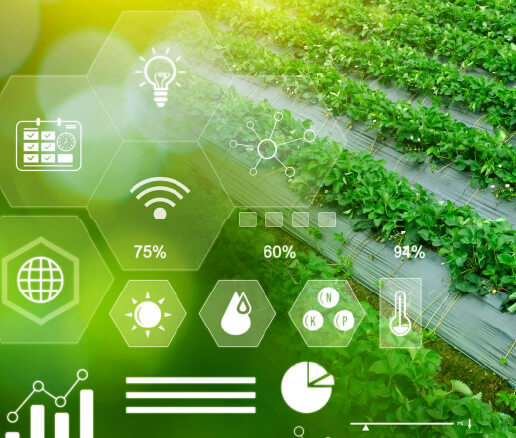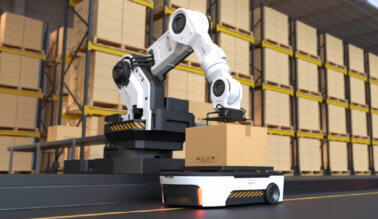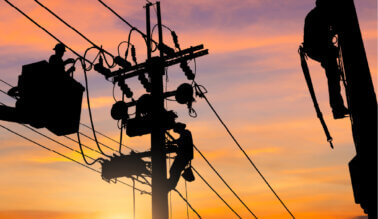Enabling smarter, faster farming through reliable mobile connectivity
by Webbing Team
In our previous posts, we discussed the role of cellular connectivity in the digitalization of the agriculture sector and how it enables real-time monitoring, efficient resource use, automation and remote operation. However, the advantages brought by this digital transformation may soon be deemed insufficient for the massive shift required to feed the world’s growing population.
By 2080, climate change is expected to cut agricultural productivity by 3 to 16%, with developing countries facing even steeper declines of 10 to 25%. On top of that, rising temperatures and unpredictable rainfall are likely to make crop diseases and other plant stresses more common.
To increase productivity and foster a deeper transformation, farmers are adopting sophisticated systems that leverage AI and other cutting-edge technologies. The more advanced these systems become and the more IoT devices they integrate, the greater their reliance on cellular connectivity.
There are several reasons why cellular connectivity is particularly well-suited for these agricultural setups. First of all, it does not require any additional infrastructure, as opposed to other wireless technologies such as Wi-Fi or Lora. Second, it can provide low latency and high bandwidth needed by AI-enabled systems used in the industry. Finally, it allows for easy integration with existing farm management systems and IoT devices.
Cellular Connectivity in Agriculture: Key Use Cases for Boosting Productivity
Let’s take a look at some of the use cases.
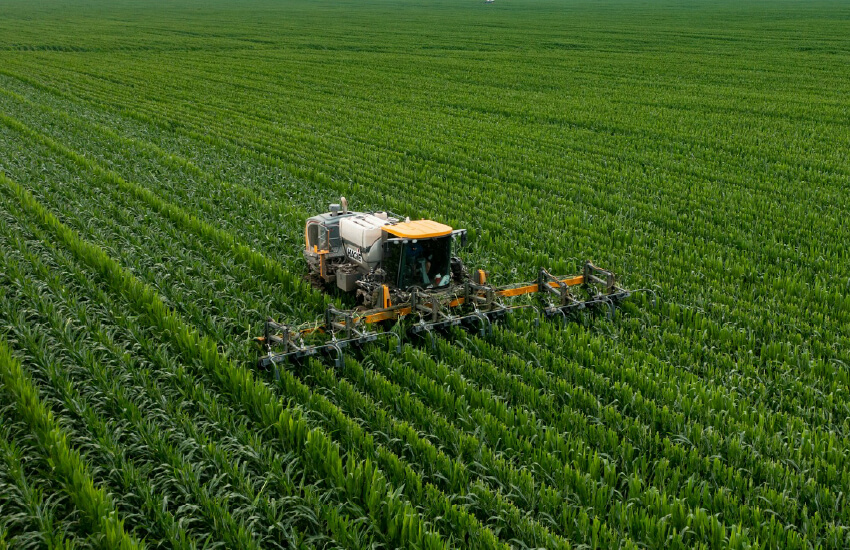
Enhancing Crop Yield Forecasting
Predicting crop yields has become more challenging in recent years due to the complex mix of climate variability, soil degradation, water scarcity, and pest dynamics. Traditional prediction methods, based on statistical models and past yield data, often fall short in capturing the wide range of changing factors that affect crop productivity, resulting in forecasts that can be unreliable or limited.
To improve the quality of forecast, farmers use cloud AI tools which leverage predictive models that can forecast crop yields, weather patterns, pest infestations, or irrigation needs. These tools must be fed with live data to help AI continuously update its models and make more accurate predictions.
Cellular networks enable continuous and consistent data transmission, which is essential for high-resolution, time-series analysis. So instead of just monitoring the crops and use traditional prediction methods, farmers can rely on AI instruments and plan activities like planting, fertilization, or harvesting with greater precision.

Livestock Health Monitoring Prediction
One of the most transformative applications of AI in livestock farming is its ability to detect patterns in animal health data that aren’t visible to the human eye — and predict issues before they become serious. This predictive capability depends entirely on the continuous flow of data made possible by cellular connectivity.
Wearable IoT devices attached to animals, such as smart collars, ear tags, or ingestible sensors, collect data on body temperature, heart rate, activity levels, rumination cycles, and feeding patterns. These data streams are transmitted via cellular networks to cloud-based platforms, where AI algorithms analyze them in real time. Over time, AI systems learn what “normal” looks like for each individual animal and the herd as a whole. As patterns are established, the system can begin flagging anomalies or early-warning indicators that might point to an emerging health problem.
Public or private networks can support an automated IoT/AI system that weighs livestock to monitor growth rates and provides guidance about feeding, grazing and breeding, or AI-powered camera traps to monitor pest populations and reduce pesticide use.
There are many other real-life use cases of such AI-powered animal health monitoring enabled by cellular connectivity. They include disease outbreaks prevention by detecting early signs such as subtle changes in body temperature or activity that might go unnoticed by humans. It can also identify nutritional deficiencies by analyzing drops in feed intake or rumination, linking them to weight gain or milk production. By tracking behavioral patterns, AI helps improve breeding efficiency through better reproductive health insights. Additionally, it can flag early signs of heat stress during heatwaves, enabling timely cooling interventions to protect animal welfare.

Optimizing Agricultural Drone Operations
Cellular connectivity can turn agricultural drones from simple, pre-programmed tools into smart data-driven machines. Connected via public and private 4G or 5G cellular networks, they analyze visual and environmental data on-board to avoid obstacles and optimize navigation, scan crops and make decisions like where to spray pesticides or when to irrigate.
Along with real-time route adjustments, cellular connectivity also enables smarter, AI-optimized paths. Agricultural drones collect vast amounts of data, including imagery, crop health indices (NDVI), and environmental metrics. Cellular connectivity allows this data to be instantly uploaded to the cloud, where AI algorithms can analyze it and re-optimize the drone’s next route in real time. For example, while a drone scouting for disease signs uploads images during its first pass, the cloud AI processes them and identifies a disease cluster in one section. It immediately updates the drone’s next route to focus more densely on that zone, skipping unaffected areas to save time and battery.
Besides, on large farms, multiple drones may be used for spraying, seeding, or monitoring. Cellular networks help coordinate these drones in real time to avoid overlap or collisions, manage workloads efficiently, and ensure full coverage. If two drones are operating in adjacent zones, the control system uses cellular connectivity to track their exact positions and redirect one if overlap is detected or if one drone finishes early.
This results in greater efficiency, better crop coverage, lower resource use, and faster decision-making.
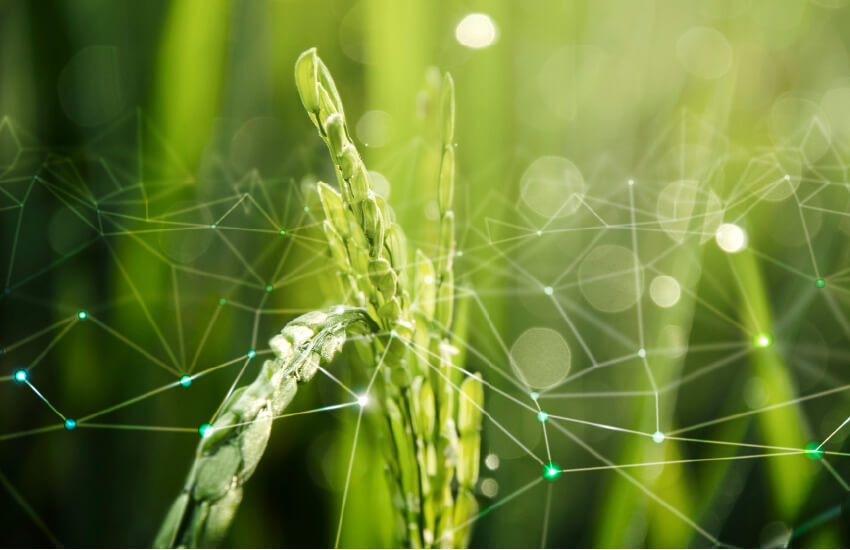
Connectivity Requirements
Low Latency
Low latency is critical for any use case that requires real-time updates. Modern cellular technologies, like 5G, can offer ultra-low latency, approximately 1 millisecond, but the actual latency would depend on the architecture of your connectivity provider’s core network, as the data first has to travel to their data center before going to its destination.
Scalability
As farms expand, the number of IoT devices (e.g., sensors, cameras, drones) increases. Cellular connectivity allows seamless scaling by providing the infrastructure necessary to support the growing volume of data across vast, dispersed farming areas. This allows AI systems to continue functioning effectively without the need for complex infrastructure upgrades. However, it is best to check whether your provider’s network solutions allow for quick and seamless growth.
Coverage and Mobility
Agriculture often spans remote or hard-to-reach areas, with no Wi-Fi or fixed connectivity. Cellular networks offer broad geographic coverage and uninterrupted data flow as devices move across fields, barns, or regional zones. Still, every network may have its weak spots, so for the systems that deal with livestock monitoring and long-range drones it’s better not to rely on just one network provider. Make sure your connectivity solution can constantly evaluate available cellular signals and connect to the one with the best coverage. This capability ensures reliable data transmission, even across borders or in changing conditions like weather.
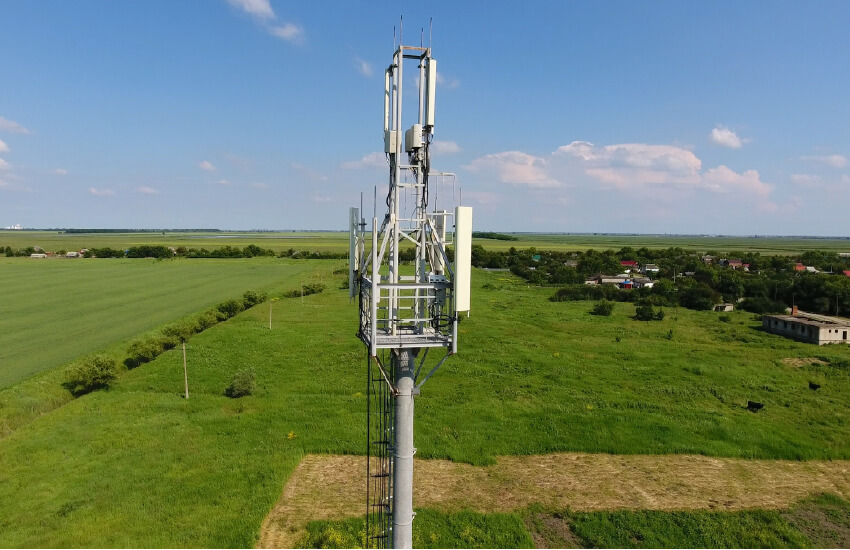
Webbing’s Connectivity Solution for Agriculture
Webbing offers a connectivity solution that ensures global access to reliable and high-quality internet, with low latency and the best of class coverage. It provides secure and continuous internet connection, delivering a streamlined, centralized, and scalable means of monitoring crops, livestock and machinery on the farm.
Webbing’s distributed core network with local breakouts, multiple network solution, and data server redundancy can provide connectivity stability and low latency. Webbing’s partner network of over 600 mobile operators worldwide guarantees global coverage. It gives access to several carriers’ network at any location, solving the problem of weak spots that any mobile network may have and guarantees full coverage and continuous connectivity for all IoT devices.
Our eSIM solution ensures failover farm connectivity with the capability of using multiple mobile carrier profiles, easily changing carriers at any time with zero integration, and an option to fall back from a failing profile to a different profile without any need to communicate with a remote server.
Our solution provides the ability to easily and securely connect any IoT devices. Webbing also offers a centralized way to manage eSIMs throughout their lifecycle via a portal. It allows for defining business rules that govern the automatic profile swap process, enabling devices to change the carrier independently in case of location change or connectivity loss, and provides visibility to profile usage and network events. This helps manage connected devices in bulks and monitor data usage of each device.
A flexible approach to data packages allows us to tailor our connectivity offering for every customer based on the type of IoT devices used and their data consumption needs as well as the locations where the devices are deployed, aiming at overall optimization of the total cost of operations for the client.
Reach out to learn how Webbing’s solutions can help you overcome any challenges with agriculture IoT connectivity.

